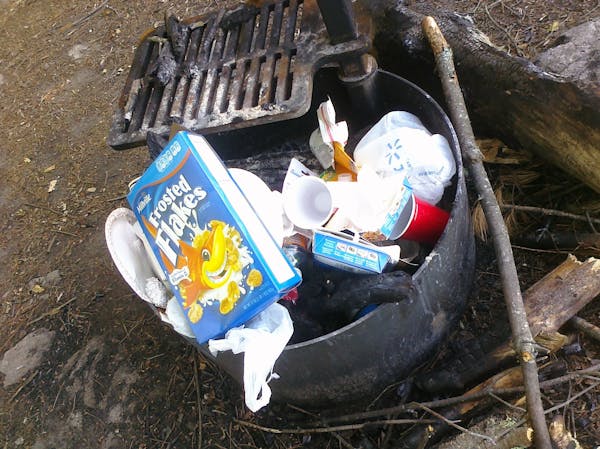The scamps, lumberjacks, gold miners, fur traders, statesmen and bootleggers who once roamed the lake country around Kettle Falls will be remembered more vividly under landmark legislation signed into law this week by President Donald Trump.
The Great American Outdoors Act will address a $10 million backlog of deferred maintenance projects at Voyageurs National Park as part of a sweeping $3 billion-a-year embrace of conservation projects, outdoor recreation and maintenance of public lands in and out of the national park system. A Department of Natural Resources official said it will have a profound impact across the state.
Voyageurs Park Superintendent Bob DeGross said the blockbuster act raises hopes for the restoration of many undeveloped historic sites inside the boundaries of Minnesota's leading national park property. Congress will determine spending priorities, but DeGross is wishing for a near-term revitalization of Dam Tender's Cabin on Namakan Lake at Kettle Falls — a structure built in 1910.
"Our biggest needs are to stabilize and restore our historic structures to assure their longevity," DeGross said. He said the sites, including the famous Kettle Falls Hotel, connect visitors to American stories that make national parks important.
Minnesota is home to four other National Park Service destinations: Pipestone National Monument, Grand Portage National Monument, Mississippi National River and Recreation Area, and St. Croix National Scenic Riverway.
"I hope that with this investment that really all parks thrive as we look to the future," said Julie Galonska, St. Croix National Scenic Riverway superintendent.
Her jurisdiction includes part of the St. Croix River and the 100-mile-long Namekagon River in western Wisconsin, a paddling-friendly tributary. St. Croix National has 150 primitive shoreline campsites, about 50 river landings, two visitor centers and about 30 miles of hiking trails. Its backlog of deferred maintenance is estimated at more than $4.4 million.
Galonska said this year's pandemic-related boom in outdoor recreation underscores the importance of the Great American Outdoors Act. The new legislation will help provide safe access to outdoor jewels such as the St. Croix, she said.
"We've seen lots of people looking for places to recreate," she said. "We've been that place for a lot of people."
Besides addressing the massive backlog of deferred maintenance at national parks, the legislation will pour $900 million a year — double current spending — into the state's Land and Water Conservation Fund (LAWCON). In Minnesota since 1965, the state assistance fund has delivered more than $81 million to outdoors projects at the state and local levels. The money is appropriated through the DNR.
State Parks and Trails Director Erika Rivers said the first-ever, full-blown funding of LAWCON is a major accomplishment. She was part of a delegation that traveled to Washington to vouch for the importance of the Great American Outdoors Act. Passage couldn't have come at a better time, she said.
"It's pretty exciting for outdoors recreation as a whole" that the bill received strong bipartisan support, Rivers said. "So many people are recognizing the importance of these assets."
The United States funds LAWCON with revenue from offshore oil and gas drilling. Any proceeds that go to Minnesota get deposited into an account governed by a state law requiring half of it be spent on projects headed by local or regional units of government. Proposals must be consistent with the state's comprehensive outdoor recreation plan, renewed every five years.
So far, more than 1,300 grants have been awarded in total for acquisition of approximately 130,000 acres of public land and the development of recreation facilities. All federal dollars must be matched at least 50% by state or local spending. The DNR says the LAWCON state assistance program pays for everything from state parks and wildlife areas to local parks, trails, boat ramps, swimming pools, ice rinks and fishing areas.
In 2019, a large portion of Minnesota's $3.7 million award went toward a $4.4 million project at the state park on Lake Vermilion. Twenty-nine state forest campgrounds and 20 Scientific and Natural Areas have benefited from the program over time, the DNR said.
The National Wildlife Refuge System also will benefit financially from the legislation, but U.S. Fish and Wildlife officials in Minnesota and Falls Church, Va., declined to comment on impacts in Minnesota.

